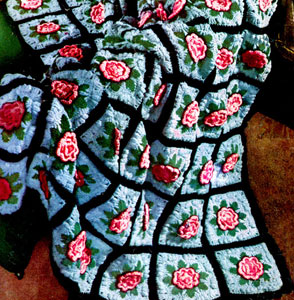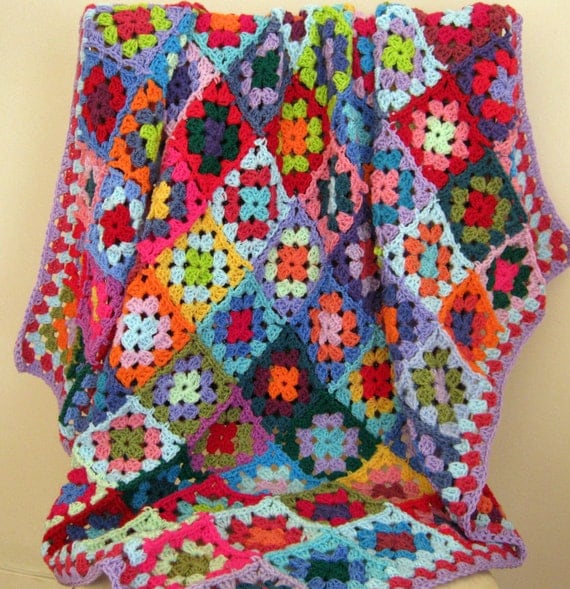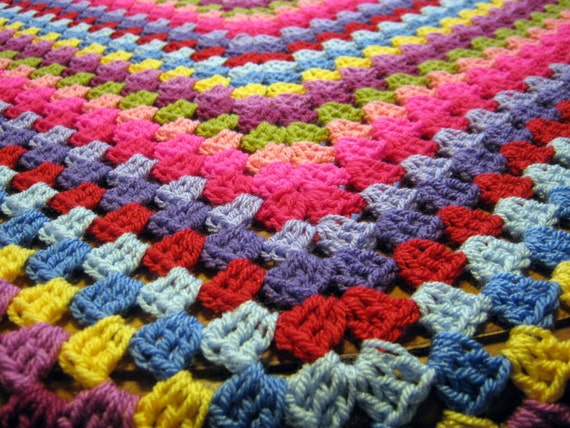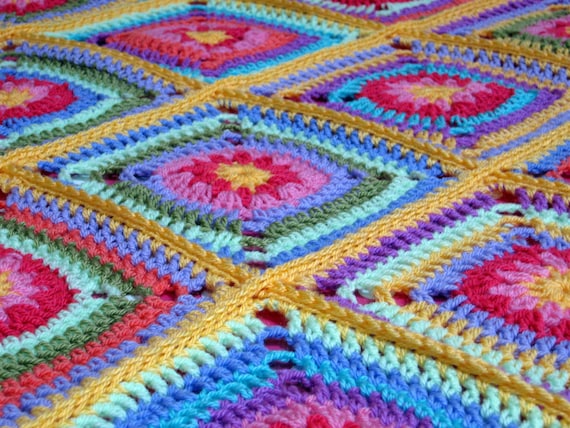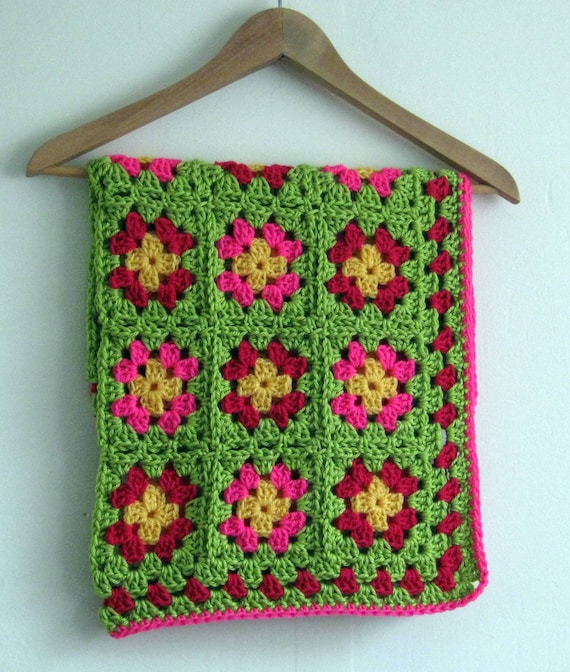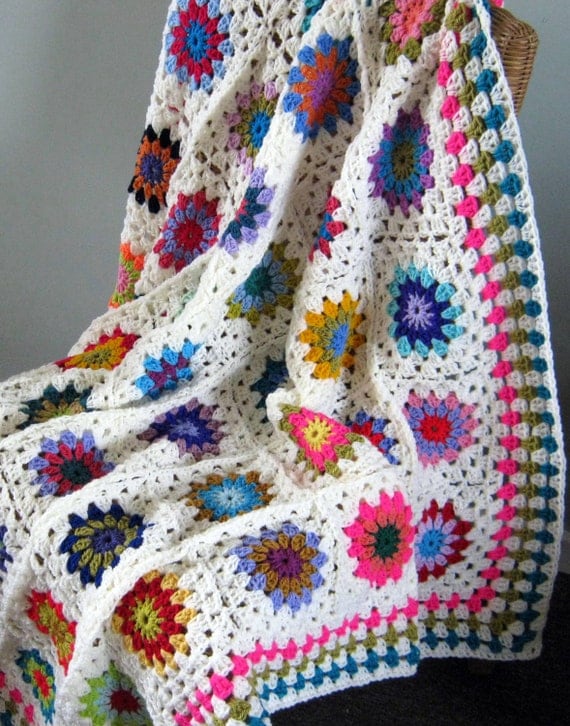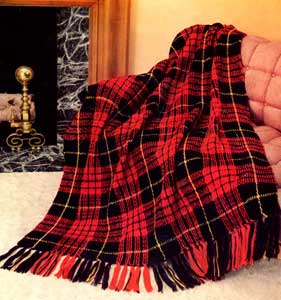Written by: Stephan Duneier
You should know, I am neither a knitter nor a crocheter. How I came to be attempting to set a world record for the largest crocheted granny square is probably more interesting than the task itself.
Each year, I set some odd resolutions for myself. Once, it was to read 50 books in the year. In another, it was to hike every trail in Santa Barbara, even though I’d never hiked in my life. 2012 was a particularly ambitious year. I set about to learn 12 new things and do 12 charitable things that didn’t involve writing a check. I called it 12 for 2012.
Wedged between learning how to use jumping stilts and drumming, was knitting, a skill suggested by my wife, Barbara. Initially, the goal was to knit a simple scarf using nothing more than the basic knit stitch. However, the result was a raggedy mess with dropped stitches and edges that expanded with the addition of every row.
What I had hoped would be a relaxing activity turned out to be one of the most frustrating to learn. I bought numerous knitting needles, including bulky wooden ones and fancy, thin metal ones connected by plastic coated wire. Unfortunately, none of it improved my stitching, or the experience itself. Regardless, completion of a project was required before I could claim that a skill had been learned, but with the scarf having become more a symbol of failure than success, I needed to come up with a new plan.
While resting under a massive eucalyptus tree, 2.6 miles up the Cold Spring Trail in the Santa Ynez Mountains, I had an epiphany. Inspired by Christo’s wrapping of the islands off the coast of Florida when I was a kid, I set a new goal to serve as evidence of my ability to knit. I endeavored to wrap that 40-foot tall tree in knitted yarn.
For the next 82 days, I loaded up on Red Heart’s Super Saver Yarn and repeated the same basic knit stitch thousands of times on airplanes, in hotel rooms, at the beach, in the hospital and even in board meetings. It didn’t take long for me to realize that in order to achieve my goal in time for the second annual International Yarn Bombing Day, I would need to recruit the help of other knitters and crocheters.
I tapped into the power of Facebook, Instagram, Pinterest, Tumblr, Twitter, Ravelry and my resolution blog,12for2012.com, on WordPress. Out of sheer luck, the blog had begun attracting attention right around the same time, due to WordPress’ featuring of my unicycling related posts on their homepage. In the weeks that followed, I forged friendships with knitters and crocheters around the world and contributions of every size, shape and color imaginable began showing up at my doorstep. When I expressed concern that I would fall short of sufficiently covering the tree, thereby disappointing those who had sent me contributions, something unexpected happened. The people who had said my resolutions and yarnbomb project had inspired them, inspired me right back.
Their encouragement lit a fire under me, pushing me to redouble my efforts. This was no longer about me. It was now about all of us and it fell on my shoulders to make the yarnbomb something for which we could all be proud.
In June, on the eve of the second International Yarn Bombing Day, I packed 6 large camping backpacks with 400 square feet of yarn that I had sewn together into a collection of 52 sections, and headed off to the trailhead. My son, Jackson, a couple of friends and one total stranger showed up to help me lug it all up to the tree and install it. A rented 14-foot aluminum ladder, which 3 friends and I had hiked up the day before in 90+ degree heat, was hidden in the brush waiting for us. Under the cover of night, with the use of headlamps, a motley crew of seven volunteers, aged 16 to 65, and I installed a spectacular Seuss-like work of art in the middle of nowhere. Exhausted, at midnight we began our trek back down the mountain and dragged our dusty selves home.
Since not a single media outlet opted to cover the project, and it existed miles from civilization in a place accessible only by hiking 2.6 miles in and 2,500 feet up, it took time for people to discover it. Day after day, word of mouth spread and crowds grew larger. People who had never hiked were venturing out at the insistence of their friends and those who were familiar with the lower sections of the trail pushed themselves further than they’d ever gone, in order to see it.
Over the next nine days, I must have hiked to the tree a dozen times. I hadn’t anticipated the emotional response it would evoke from those who viewed it. Magical, is the only way to describe it.
Although many begged me to keep it up longer, the ladder was costing me money every day and I needed to focus on learning how to play the drums in time for my upcoming recital. The yarnbomb was removed and shipped to Warm Up America, a charity in North Carolina. The knitting needles and remaining yarn were promptly returned to my wife, never to be used again, or so I thought.
About 6 months later, Paula Thomson, head of a non-profit in South Africa called Woza Moya contacted me to advise her on how to go about yarnbombing a similar tree on their property. Learning that my project had inspired an installation halfway around the world was, well, pretty cool.
Early last summer, one of the contributors to my yarnbomb, Marcy Kraft, aka Crochet Grenade, requested help with a large project of her own, but she needed each contribution to be of a specific size, color and stitch. Oh, and she needed them to be crocheted which was a skill I had not yet learned. It was my turn to pay back the favor though and so I learned by watching her YouTube video. Very slowly I churned out 24 seven-inch squares according to her specifications. From there I was hooked. (No pun intended.)
I decided to try my hand at yarnbombing again. This time the target was a massive boulder, which sits one mile up the Saddlerock Trail. Marcy sent me every piece from her project plus a few more. Most of the original contributors sent me pieces again, as did a few others. Just over a month later I had crocheted dozens of squares exactly the same as those I’d made for Marcy’s project. I experimented by swapping in multiple colors in a square, but didn’t expand my repertoire much beyond that. I noticed that what was really slowing down my production was the casting on and those first few rotations of a new square.
While on a business trip in New York, it dawned on me that I could increase my productivity simply by making larger squares. I called around the city for yarn stores, but no one carried Red Heart’s Super Saver Yarn except Michael’s in Harlem. Lucky for me, they also happened to be the only store open until 10pm. As soon as I finished a business dinner, I walked 50 blocks up to Michael’s and stocked up on as many bright Red Heart skeins as I could carry. I didn’t know it at the time, but that was the beginning of my current project.
I crocheted just one square the rest of the trip, adding skein after skein. When I arrived home, I submitted an application to Guinness World Records to create a new category for the largest granny square, but it was rejected. They said it fell under the Largest Crocheted Blanket category and the current record was over 81 feet long. Not one to give up so easily, I appealed their decision, stating that a blanket could be created by literally dozens of people making small blankets simultaneously and then attaching them together. What I was proposing was a piece that only one person could work on at a time and as such, was a far different endeavor. They relented, but set a minimum size of 32′ 9″ square for a new category, Largest Crocheted Square. As insane as that randomly selected minimum might be, I now had a target.
My square is currently 11 feet on each side, which sounds like I am a third of the way there, but it’s not. You see, 11 feet squared is 121 square feet. Don’t get me wrong, that’s a big piece to work on. To provide some perspective, a jumbo skein of Red Heart’s Super Saver Yarn is needed to add just 3 double crocheted rows. In the end, if I am to set the world record for largest crocheted square, it will need to be 1,089 square feet, or 9 times bigger than what I have created so far.
Thankfully, the people at Red Heart were kind enough to step in and offer to supply the yarn necessary for me to reach that goal. Toward that end, 60 jumbo skeins recently arrived at my house. With Red Heart’s generous support, the words of encouragement from so many via Instagram (@yarnbombs), Facebook (www.facebook.com/yarnbombs) and Twitter (@yarnbombs), and of course the unwavering patience of my wife and kids, I hope to unveil the record setting piece as part of my third major yarnbomb installation Memorial Day weekend at Lizard’s Mouth in the mountains of Santa Barbara.
You can find the original article at Redheart.com click here.





























